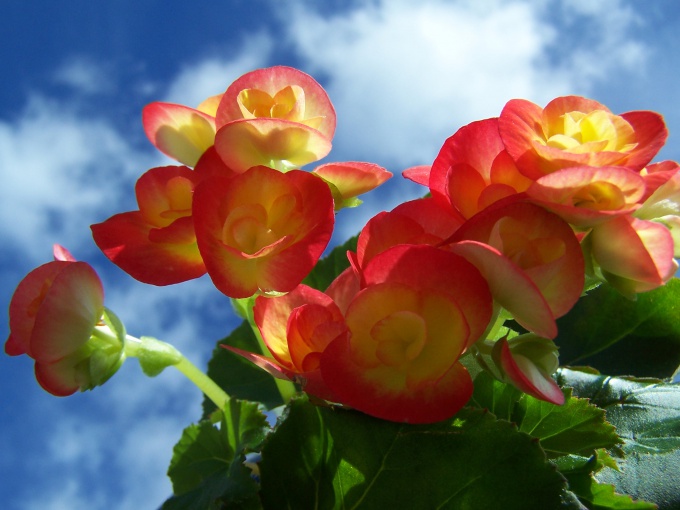Instruction
1
Prepare the capacity for change. Because of the high probability of root rot and waterlogging experts do not recommend planting begonias in plastic pots. Use ceramic or clay bowls with a high pallet so that the excess water when watering not to remain in the soil. Young rooted cuttings plant them in pots with a radius of 5-6 cm, and older plants of 8-10 cm When transplanting keep in mind that the new capacity should be at least 1/3 more than the former.At the bottom of the flower pot, place the drainage (expanded clay, broken shards, fragments of red brick). The next layer, place the charcoal.
2
Prepare substrate suitable for begonias, it should be fairly loose and breathable. For planting young plants, mix equal proportions of earth and turf, and for adult begonias prepare a mixture of earth, peat and sand. In such soils, the plants develop a good root system and a beautiful green foliage. Carefully pour the substrate with warm water.
3
Remove the begonia from its previous pot. To do this, evenly tap around the diameter of the container and tilt it at a sharp angle. Carefully pull the fingers the stems and leaves, dump the hand earth com. Cut away the old dried up roots, wooden stick clean off the land with the remnants of the drainage and charcoal. If the shaking of the earth you will notice signs of decay, thoroughly clean the root system, wash it with a weak solution of potassium permanganate. After cutting the rotten roots, let them dry, and then sprinkle the cut or crushed activated charcoal.
4
Put prepared plant in the center of the new pot. Be careful not to break the leaves, pour the prepared substrate into the voids at the edges of earthen coma. Where necessary the soil should be pinched with your fingers. Pour into a container down below to the top edge of at least 1-1,5 cm This space will be useful for later watering begonias.
5
Liberally pour is planted in the plant as long as the water stays out of the drainage holes.
